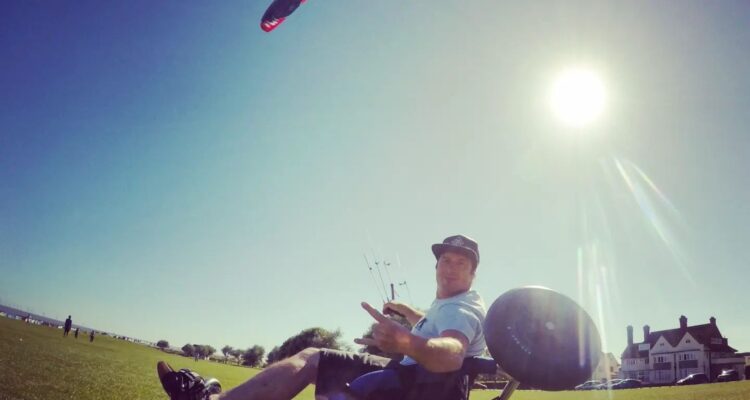A power kite is an aerofoil-shaped wing that uses the wind to produce traction and lift. Bridle lines are attached to the foil to keep its shape whilst the kite is flying. The airflow generated by the wind produces lift which makes the kite fly in the air.
There are additional flying lines are attached to the end of each bridle set helping the flyer to steer the kite and reduce the power it generates if need be. Depending on the type of kite, a foil might have between 2 to 5 lines.
2 Line Kites:
Two-line kites are used for recreational flying and are ideal for complete beginners who have no experience in kite flying. Each line is attached to one end of the kite. These lines are used for steering the kite. At the end of each line, you have flying straps that you can hold onto or wrap around your wrist.
The only disadvantage of two-line kites is that they do not have brake lines. Therefore in stronger winds, they get a little bit challenging to control. The only way to land them is either to crash them on the ground or fly them into the edge of the flying window where the kite loses its power and gravity takes over and brings the kite down.
3 Line Power Kites:
Four-line power kites are designed to produce more power than two-line kites. These power kites have an additional two lines used for brakes. The power lines are attached to the top section of the kite while the brake lines are attached to the bottom of the kite. The brake lines come in handy when the wind picks up and the kite starts producing more power than you can handle. Brake lines help you reduce the power the kite generates. Brake lines are also used for landing, steering, and re-launching if the kite is upside down on the ground.
Kite Control Systems:
With a four-line kite, you can either use kite handles or a kite bar to control the kite while flying. The choice of control system depends on the activity you are doing. Generally speaking, people prefer using handles for both recreational flying and kite buggying while kitesurfers or land boarders use kite bars to control the kite. However, depending on your experience level you can also use a bar when you are landboarding.
Kite Handles:
Come in pairs. Each handle has top and bottom lines attached to each end. The top lines are used as power lines and the bottom lines are used as brake lines. Some handles will have padding near the top to offer more comfort whilst flying.
You may find additional lines attached to the brake lines on it. These are called kite killers and are only used where you need to kill the power immediately in case of emergency.
Kite Bar:
are used on both two-line and four-line power kites. Steering is slightly different from using a handle but with some practicing, you may find the kite bar easier to control than the handles.
On a two-line bar, you will only have your steering lines attached to each end of the bar. With a 4-line power kite, you have the additional brake lines that are joined together in the middle using a pulley system. At the end of the pulley system, you have a single line which becomes your brake line. This brake line is attached to your wrist using a padded wrist strap. On more advanced four-line bars you have a chicken loop that is attached to your waist using a harness instead of the wrist straps.
If you need more information about power kites visit eXtreme Kite Shop. The site offers tips and general information on power kites and you may even grab a bargain if you arrive at the right time.

